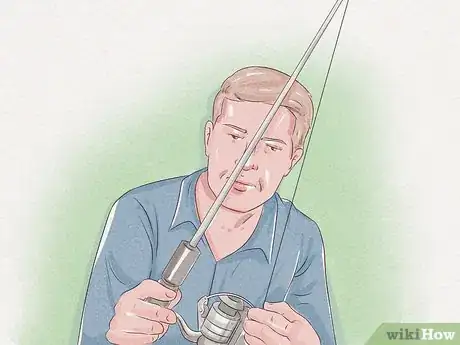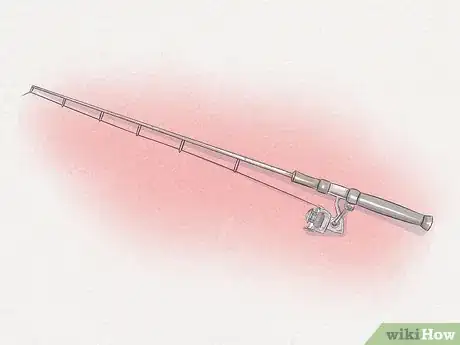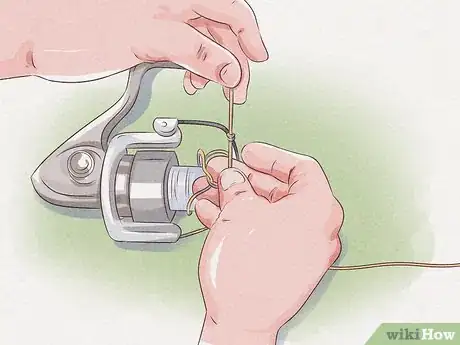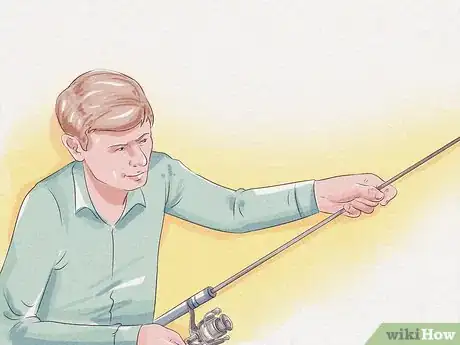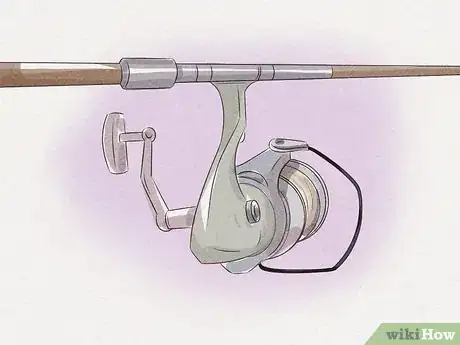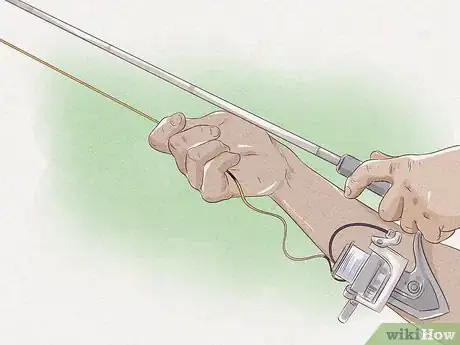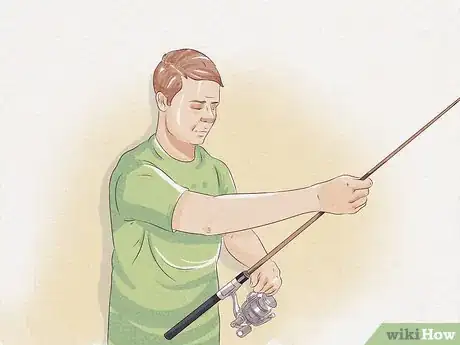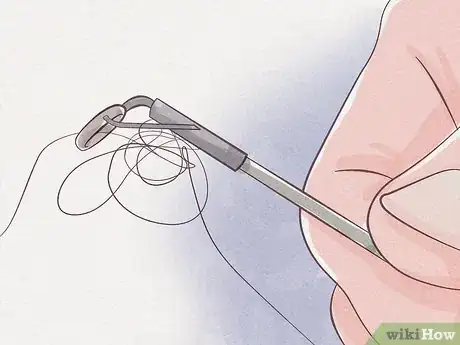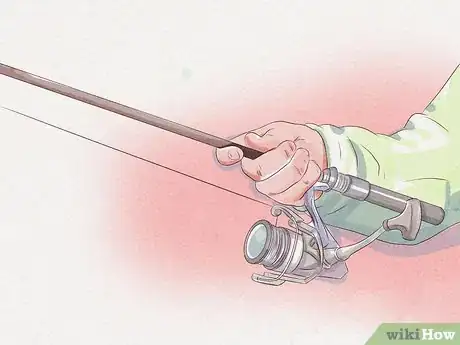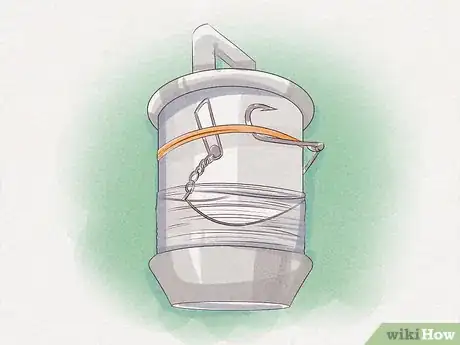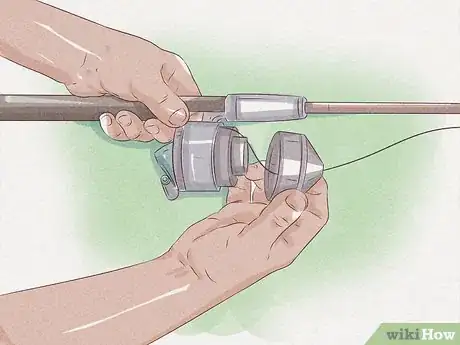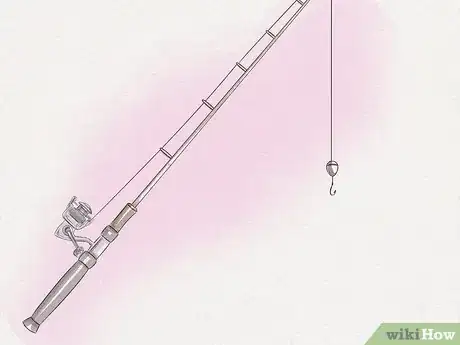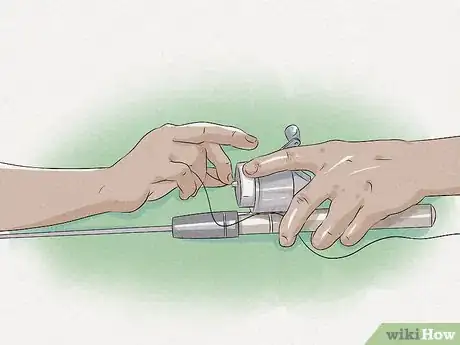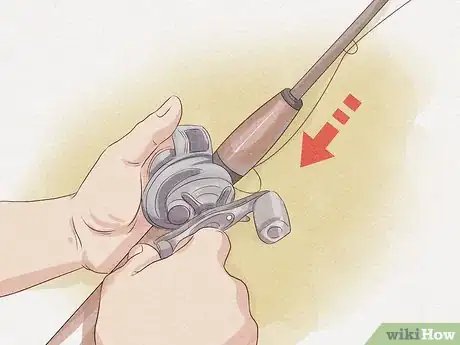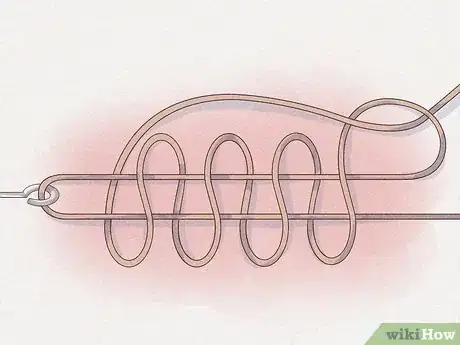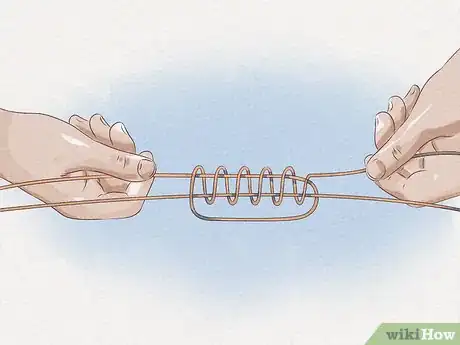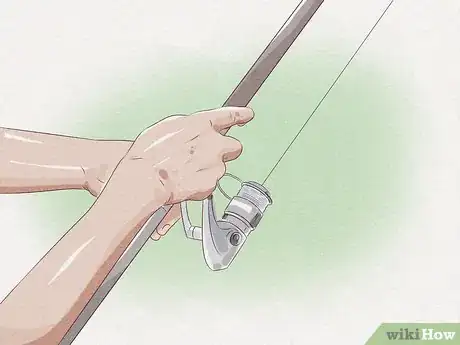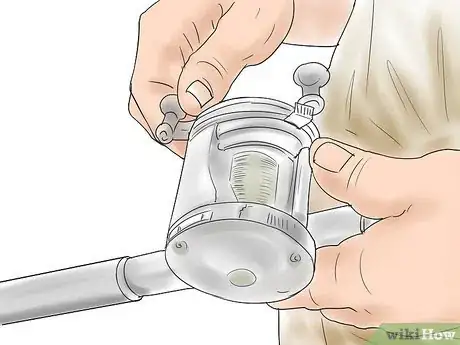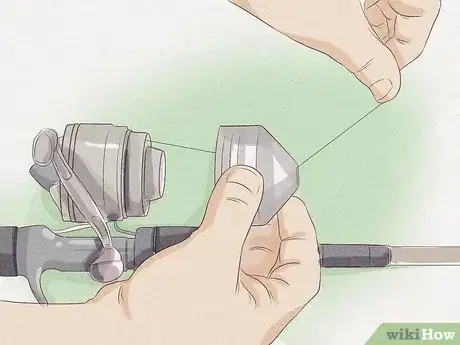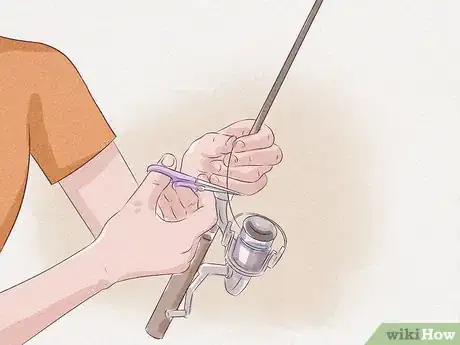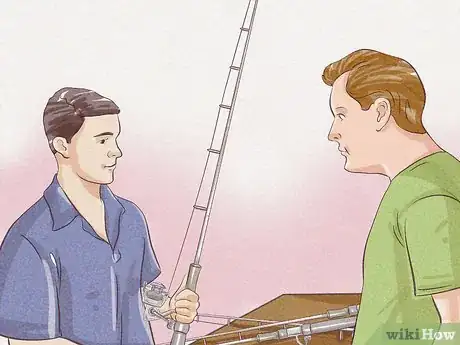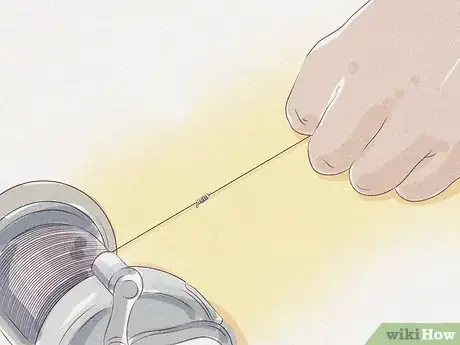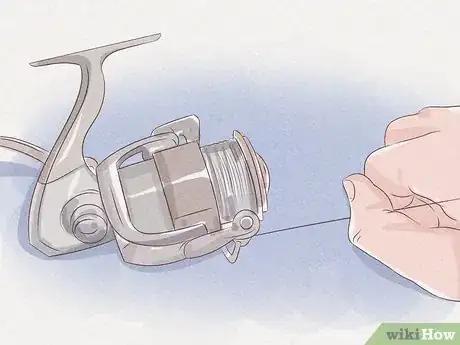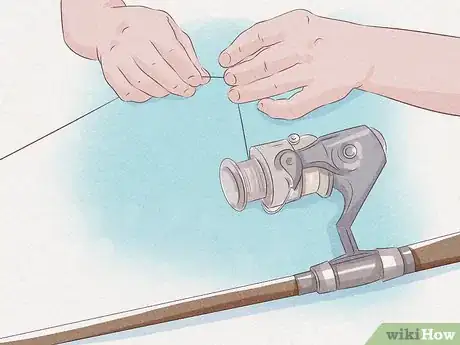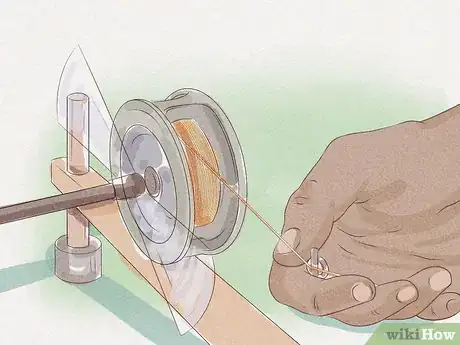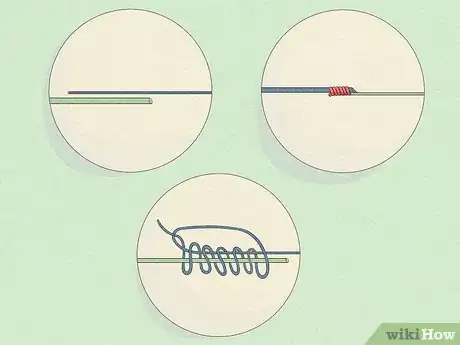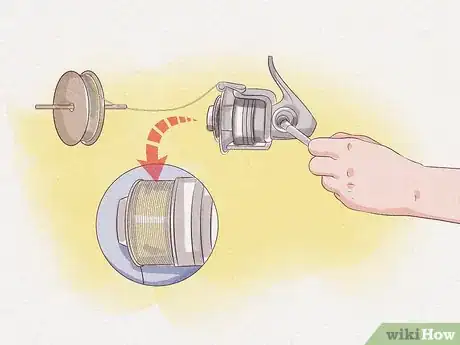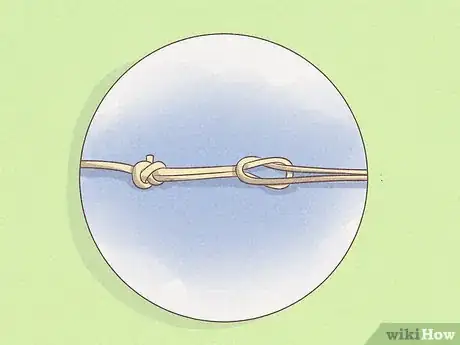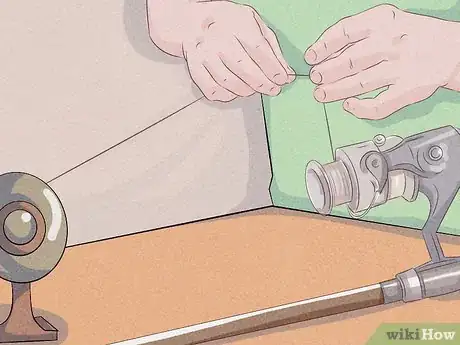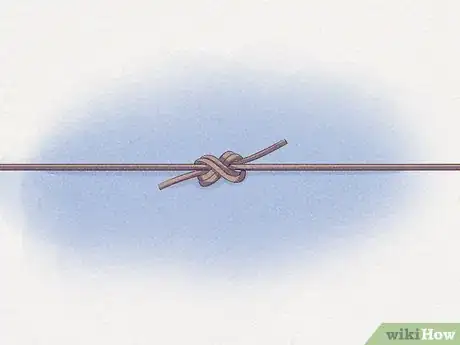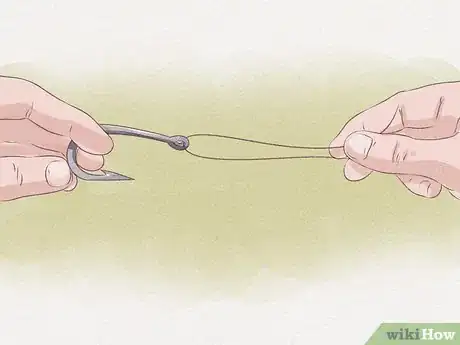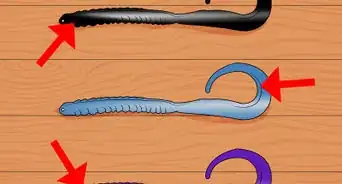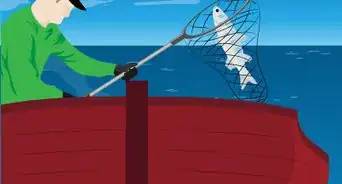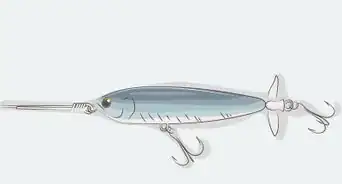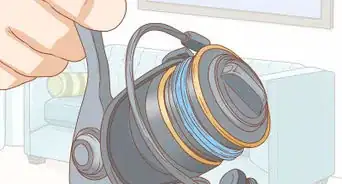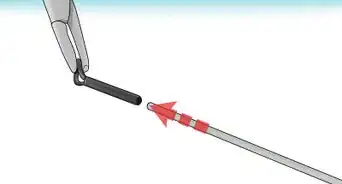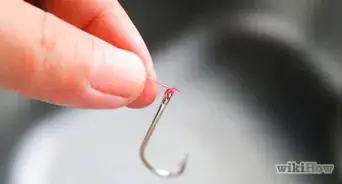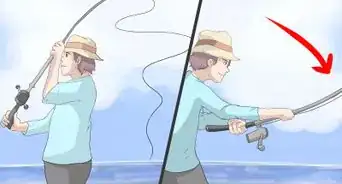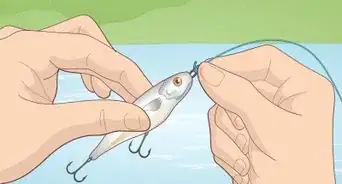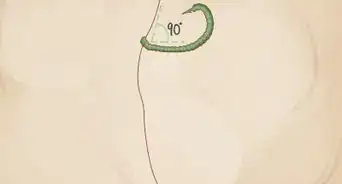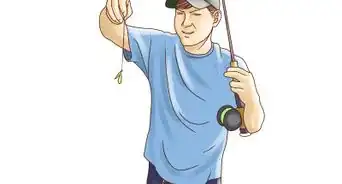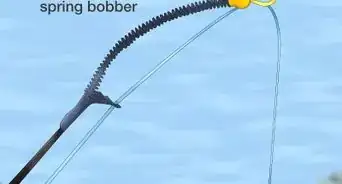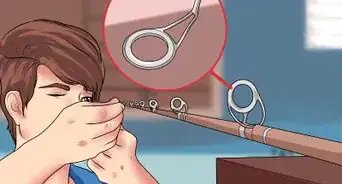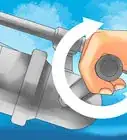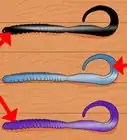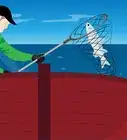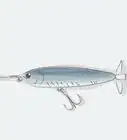This article was co-authored by Kathy Sparrow, MA. Kathy Sparrow is a fly-fishing instructor and adventurer at heart. Kathy is the co-founder and previous manager of the Kingfisher Inn, a fly-fishing lodge on the Lower Laguna Madre in Texas. She is the author of "On the Mother Lagoon: Flyfishing and the Spiritual Journey" and "The Whispered Teachings of Grandmother Trout” a novel conveying the feminine perspective of fly fishing. Kathy is also a Certified Canfield Trainer in Canfield Methodologies. She guides individuals through the process of embracing change by expressing confidence, awareness, and courage through the tools of writing, fly fishing, and intentional conversation. She has a MA in English with an emphasis in Literature and Cultural Studies from the University of Texas-Pan American.
There are 17 references cited in this article, which can be found at the bottom of the page.
wikiHow marks an article as reader-approved once it receives enough positive feedback. In this case, several readers have written to tell us that this article was helpful to them, earning it our reader-approved status.
This article has been viewed 1,396,268 times.
Over time, your fishing line wears out, tangles more easily, and becomes more difficult to catch. Spooling new line is the same no matter what kind of rod you have. All you have to do is knot the line and wrap it around the reel’s spool. For fly fishing, you’ll need different types of line to get the best cast possible. To catch plenty of fish, replace your line at least once a season.
Steps
Loading Spinning and Baitcaster Reels
-
1Open the bail by lifting the wire arm. On spinning reels, the bail is the little wire arm hanging off the reel. Lift the line up to open the bail, and lift it down to close the bail. Unwrap any old line still in place.
- Baitcasters don’t have a bail, so you won’t need to do this step.
-
2Run the new line through the line guides. The line guides are the small loops hanging off the underside of the rod. Start at the far end of the rod, pushing the line through the loops and towards the reel.[1]
- For a Baitcaster rod, look for a little hole in the reel. You’ll also need to run the line through this guide to get it into the bail.
Advertisement -
3Knot the line on the reel spool. Wrap the end of the fishing line over the spool, which is the indentation in the middle of the reel. Bring the end of the line back towards you and tie the line together in an arbor knot.[2]
- An arbor knot is done by first tying an overhand knot. Tie a second overhand knot at the free end of the line. Then pull both knots tight against the reel.
-
4Close the bail by lowering the wire arm. Pull the wire arm as far down as it will go. This locks the line in place. If the line comes undone, you’ll need to lift up the bail and redo the knot.
-
5Crank the rod’s handle to figure out which way the bail rotates. Make note of the direction the bail rotates, since the line needs to be loaded in the same direction. Drop the spool of new fishing line on the floor with the label facing upwards and adjust the position of the rod so the line can be loaded correctly.
- For example, if your bail rotates clockwise, stand to the left of the spool so the line wraps clockwise around it.
- For Baitcaster rods, you’ll need to stick a pencil through the spool and have someone else hold it. Alternatively, purchase a reel spooler or make one by placing the spool on a screwdriver pushed through a cardboard box.[3]
-
6Lightly grip the line between your thumb and your index finger. Use your free hand as you hold the rod in your other hand. You’ll need to maintain constant pressure. If the line feels taut and doesn’t tangle going onto the reel, you’re holding it correctly.[4]
-
7Turn the rod’s handle 15-20 times. Continue gripping the line as you crank the handle. 15-20 rotations is enough to load the line into the reel. Make sure you keep an eye on the line so it doesn’t load with knots or tangles. You’ll have to unspool the line to fix this.
- For knots or tangles, gently pull the line back off the reel. Tug on the loop of line in the tangled part and it’ll unravel.
-
8Drop the line to test it for tangles. Let go of the line and watch it drop towards the ground. You’ll immediately notice any twists or loops in the line. To compensate, flip the spool of new fishing line so that the label faces the ground.[5]
- Make sure the line continues to load in the same direction the bail rotates!
-
9Fill the rod’s spool until it’s almost full. Pinch the line again between your thumb and index finger so it stays straight, then rotate the rod’s crank. Load the line until the reel is almost full. The line should be about 1⁄8 in (0.32 cm) below the spool's rim. Cut the line to detach it from the new spool to finish.
-
10Secure the line to the reel with a rubber band. Simply place a rubber band around the line on the reel to hold it in place. If your reel has a tab on the side, wrapping the line around it will also hold everything in place.
Filling a Close-Faced or Spincast Reel
-
1Unscrew the face of the reel. Before you can spool the line, remove the top part of the reel. Twist is counterclockwise until it’s loose enough to pull off the reel. Some beginner-friendly models have a button you can press to pop off this cap. Unwind any old line left over by spinning the handle.[6]
- Close-faced and Spincast are different names for the same reel. You’ll know you have one if it has this cover you need to unscrew to reach the reel’s spool.
-
2Insert the line through line guides at the rod’s tip. Look for the small rings hanging off the bottom of the rod. Starting at the rod’s tip, run the new line through the holes towards the reel.[7]
-
3Push the line into the hole on the reel’s cap. Pick up the cap and run the line through the hole in the top. If you don’t do this now, you won’t be able to get the cap on later when you need it. Don’t attach the cap to the rest of the reel yet.
-
4Wind the line around the spool in the same direction the reel turns. Like with the other types of rods, the rod’s spool will have a small hollow in the middle where the line rests. Wrap it around this hollow twice so that you’ll have enough to line to tie in place.[8]
- Always make sure the line goes on the same way the reel rotates. If it rotates clockwise, the line should be wrapped around it counterclockwise. The direction of the rotation depends on the fishing pole.
-
5Tie the end of the line into a knot. Knot it against the reel so the line doesn’t come undone. You can do this with a slip knot, clinch knot, or arbor knot. Make sure the line is securely tied and tight before you move on.[9]
-
6Pinch the line between your thumb and index finger. Use your free hand to apply a light amount of pressure on the line as you spool it onto the reel. This will keep the line tense, preventing it from tangling.
-
7Crank the handle to load the line. Hold the line taut between your thumb and index finger, applying a little bit of pressure to keep the line straight. Turn the handle in the same direction you loaded the line, which should have been the same direction the reel normally rotates to unspool the line.[10]
- For example, if you spooled the line counterclockwise, crank the handle counterclockwise.
-
8Spool the line until the reel is almost full. Load the line, but don’t fill the reel completely. The line should be about 1⁄8 inch (0.32 cm) below the spool's rim. The line should hang from the rest of the rod with no slack.
- Adding too much can make the line come undone, so you’ll have to spool it all over again.
-
9Put the cover back on the reel. Grab the reel’s cover, which should have already been threaded with the new line. Twist it clockwise onto the reel to secure it in place.[11]
- If you left the cover off, unwind all of the thread. You’ll need a lot of space for this, so try walking around and hanging the line on fences or other objects so it stays untangled. Then spool the line through the cover and onto the reel.
-
10Cut the fishing line off the spool. Go back to the tip of the rod. Get a pair of scissors and snip the line beyond the tip’s end. Avoid clipping the line that’s hanging from the line guides under the rod.
Spooling Line for a Fly Fishing Reel
-
1Purchase backing and fishing line from a supply store. Fly fishing line uses at least 2 different types of line. You’ll need to get a spool of backing and a spool of fishing line. For a stronger line that catches more fish, invest in leader line and tipping.
- Backing line is the heaviest and cheapest type. Get some marked with a weight of 20 to 30 lb (9.1 to 13.6 kg). It’ll be about 20 ft (6.1 m) long.[12]
- Look on your rod to find a number signifying the the weight of fly line you’ll need. These lines are typically around 80 to 90 ft (24 to 27 m) long.[13]
- Get leader line that’s tapered and made of monofilament or fluorocarbon. You’ll need a roll about 9 ft (2.7 m) long, although you can lengthen it for deeper waters and shorten it for shallow water or windy conditions.[14]
- Purchase 2 to 4 ft (0.61 to 1.22 m) of tippet line that’s thinner than the leader line. It’s rated on an X scale, where 01X to 08X are strong enough for large fish like striped bass and lines from 1X to 8X are for smaller fish like trout.[15]
-
2Knot the backing line to your reel. Wrap the end of the backing line around the groove in the spool. Bring it all the way around and back up to your hand. Beyond the reel, tie the end of the backing to the rest of the line with an arbor knot.[16]
-
3Feed the line in the same direction the reel spins. No matter the line, put it on the line the same way the reel normally rotates. For a reel that spins clockwise, the line should always be spooled on clockwise too.
-
4Ask someone to help you spool the line. Get them to wear thick gloves. They should hold the line between their thumb and index finger as you spool it. Keep a firm grasp on the line, applying light pressure as you load the line onto the reel.
- If you can't find someone to help you, take the reel to a tackle shop. They will will spool the line for you.
- It’s important to do this with every line in order to prevent tangles.
-
5Spool the backing onto the reel. Let between 50 to 100 yd (46 to 91 m) out of the spool. Wrap it tightly on the reel. Do this by hand unless you’ve got a spooling machine on hand. Sever the line with scissors when you’re done.[17]
-
6Knot the fly line to the backing. Unwind a little bit of the fly line from the spool. Pick up the end of the backing line that’s on your reel, then tie them together with an Albright knot. Make sure the knot feels secure so you don’t lose your fly line while fishing![18]
- For the Albright knot, make a loop with the heavier line. Run the lighter line through it and wrap it 10 times over the heavier line back towards the loop. Bring it back down through the loop and pull the the lines tight.
-
7Wind the line until the reel is almost full. Wind the line the same way you did with the backing. The fly line will fill up most of the reel and should be about 1⁄8 in (0.32 cm) below the reel’s lip. If you don’t plan on adding a leader or tippet line, you’re done spooling new line.
-
8Tie the fly line to the leader line if you are adding it. In case you are adding leader line, take the end of the fly line and tie it to the end of the leader line. Another Albright knot works here, but a nail knot leads to a smoother line. It involves looping the lines around a pen or other object to tie them together.
- You can purchase a nail knot tool to help with this kind of knot.[19]
-
9Wind the optional leader line onto your reel. Wind the line by hand or by using the spooling machine. Get it as tight over the fly line as you can make it. It’ll protect your fly line and make it more visible to the fish.[20]
-
10Tie the leader line to a tippet line you wish to add. You don’t have to add a tippet line, but it’s easier to the tie to the fly. The easiest way to tie these lines is with a double surgeon’s knot. You’ll place the lines side by side, facing opposite directions before looping them into a knot. Spool the entire tippet line onto your reel when done.[21]
-
11Secure the fly to end of the line. Take about 5 to 6 in (13 to 15 cm) of the last line on your reel and pull it through the eye of the fly’s hook. The improved clinch knot or turtle knot are both good options for securing the fly. Get the knot as tight as you can make it, then trim off the end of the line before going fishing.[22]
Expert Q&A
-
QuestionHow do I know what fly line to use?
 Kathy Sparrow, MAKathy Sparrow is a fly-fishing instructor and adventurer at heart. Kathy is the co-founder and previous manager of the Kingfisher Inn, a fly-fishing lodge on the Lower Laguna Madre in Texas. She is the author of "On the Mother Lagoon: Flyfishing and the Spiritual Journey" and "The Whispered Teachings of Grandmother Trout” a novel conveying the feminine perspective of fly fishing. Kathy is also a Certified Canfield Trainer in Canfield Methodologies. She guides individuals through the process of embracing change by expressing confidence, awareness, and courage through the tools of writing, fly fishing, and intentional conversation. She has a MA in English with an emphasis in Literature and Cultural Studies from the University of Texas-Pan American.
Kathy Sparrow, MAKathy Sparrow is a fly-fishing instructor and adventurer at heart. Kathy is the co-founder and previous manager of the Kingfisher Inn, a fly-fishing lodge on the Lower Laguna Madre in Texas. She is the author of "On the Mother Lagoon: Flyfishing and the Spiritual Journey" and "The Whispered Teachings of Grandmother Trout” a novel conveying the feminine perspective of fly fishing. Kathy is also a Certified Canfield Trainer in Canfield Methodologies. She guides individuals through the process of embracing change by expressing confidence, awareness, and courage through the tools of writing, fly fishing, and intentional conversation. She has a MA in English with an emphasis in Literature and Cultural Studies from the University of Texas-Pan American.
Fishing Instructor Think about where you're going fishing! You don't want to use a saltwater line if you're fishing freshwater, as saltwater lines are more for tropical, warmer waters. If you can, look for a local fly shop in the area and see what they recommend—they know the water and what works best there.
Think about where you're going fishing! You don't want to use a saltwater line if you're fishing freshwater, as saltwater lines are more for tropical, warmer waters. If you can, look for a local fly shop in the area and see what they recommend—they know the water and what works best there. -
QuestionI heard that soaking the new line in warm water may be helpful. Is this true?
 Community AnswerIt does help, if your line is twisted after it goes on the reel. Take the real spool off and soak the line in warm water for about 10 minutes. As long as the line goes on with a minimum of twist, it does not need to be soaked in warm water.
Community AnswerIt does help, if your line is twisted after it goes on the reel. Take the real spool off and soak the line in warm water for about 10 minutes. As long as the line goes on with a minimum of twist, it does not need to be soaked in warm water. -
QuestionDo those theories apply to braided fishing line as well?
 austin luoCommunity AnswerNo, braided line doesn't have the memory problem like mono and fluorocarbon fishing line so you don't have to soak it.
austin luoCommunity AnswerNo, braided line doesn't have the memory problem like mono and fluorocarbon fishing line so you don't have to soak it.
Warnings
- Never dispose of old line by throwing it on the ground or into the water. Birds and fish get tangled in old line and die.⧼thumbs_response⧽
- Avoid biting the line, since it can chip your teeth.⧼thumbs_response⧽
References
- ↑ http://goneoutdoors.com/wind-fishing-line-onto-reel-6728302.html
- ↑ http://www.bassfishingandcatching.com/spooling-fishing-line.html
- ↑ https://www.youtube.com/watch?v=L9zE8zPxl-c&t=70s
- ↑ https://www.bassfishermansguide.com/how-to-spool-a-spinning-reel/
- ↑ http://kentucky.gov/Pages/Activity-Stream.aspx?viewMode=ViewDetailInNewPage&eventID=%7B82F2BCAF-774E-40D6-A581-5F04B0FB7788%7D&activityType=PressRelease
- ↑ https://www.youtube.com/watch?v=eKlsSejU4Tw&t=40s
- ↑ http://goneoutdoors.com/spool-closed-face-fishing-reel-8754643.html
- ↑ http://goneoutdoors.com/spool-closed-face-fishing-reel-8754643.html
- ↑ http://goneoutdoors.com/put-line-closedfaced-fishing-reel-6123982.html
- ↑ https://www.youtube.com/watch?v=eKlsSejU4Tw&t=122s
- ↑ http://goneoutdoors.com/spool-closed-face-fishing-reel-8754643.html
- ↑ http://globalflyfisher.com/fish-better/first-setup
- ↑ http://globalflyfisher.com/what-is/what-is-a-fly-rod
- ↑ https://theflyfishingbasics.com/fly-fishing-leader-and-tippet-what-why-how/
- ↑ https://theflyfishingbasics.com/fly-fishing-leader-and-tippet-what-why-how/
- ↑ http://troutster.com/how-to-put-fly-line-and-backing-on-a-fly-fishing-reel-setup/
- ↑ http://troutster.com/how-to-put-fly-line-and-backing-on-a-fly-fishing-reel-setup/
- ↑ https://www.youtube.com/watch?v=l2b6NFfcZag&t=68s
- ↑ https://www.youtube.com/watch?v=3OQtVVuIMQU&t=210s
- ↑ http://globalflyfisher.com/fish-better/first-setup
- ↑ https://www.youtube.com/watch?v=LIsD5-W6pFE&t=1s
- ↑ http://globalflyfisher.com/fish-better/illustrated-knot-table
About This Article
If you want to spool new fishing line onto a closed face reel, unscrew the face of the reel and unwind any old line that is left in it. Then, feed your new line through the pole’s guides by starting at the tip and working towards the reel. Next, feed the line through the hole in the reel’s cap and tie it to the reel. Use the handle to wind the string onto the reel in the same direction the reel spins. Finally, screw the cap back on and cut off any extra line. To learn how to load baitcaster reels and fly fishing reels, read on!
